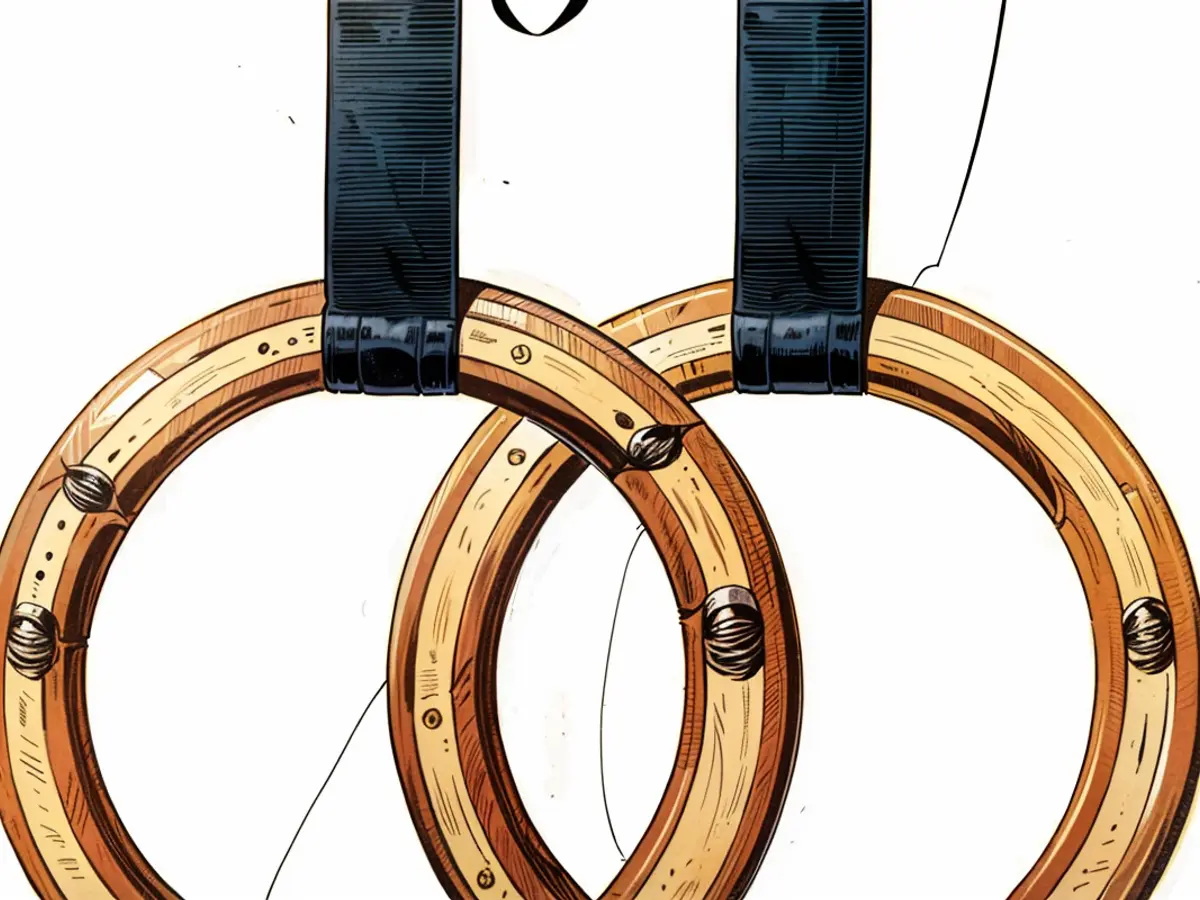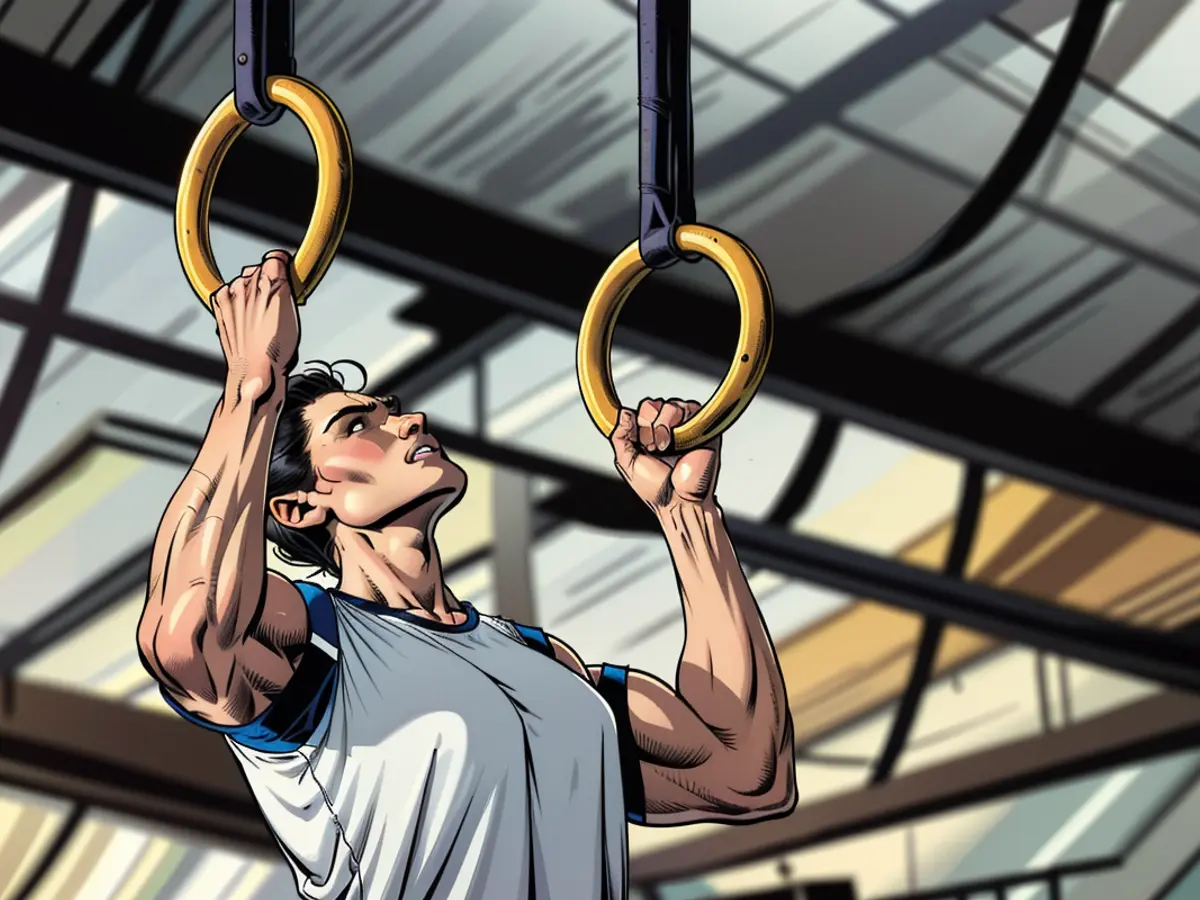How to Choose, Set up, and Use Gymnastics Rings for Home Workouts
Gymnastics rings aren’t just for Olympic gymnasts. They’re cheap, versatile, and can open up a world of training possibilities if you’re working out at home without weights. They can be a little bit confusing to set up at first, so here’s a guide to buying, hanging, and using gymnastics rings.
What are gymnastics rings and what are they good for?
Rings are just what they sound like: hoops, traditionally made of wood, that hang from straps. You can stand underneath them and reach up to do pull-ups, ring rows, or any of dozens of other pulling exercises.
If you’re training without weights, you’ve probably found ways of doing push exercises (pushups are classic) and maybe leg exercises as well (like lunges or pistol squats). But you’ll need something to pull on if you want to get a well-rounded workout, so gymnastics rings are a great option.
We have a list here of some of the best exercises you can do with a suspension trainer, and most can also be done with gymnastics rings. There are ways to do rows, bicep curls, leg exercises, and more.
Should I buy gymnastics rings or a TRX set?
Before we get into the details about rings, let’s answer an important question: do you want rings or do you want a suspension trainer like a TRX set?
The main difference is that the two straps of a suspension trainer are attached to each other, and meant to be anchored to the same point. Gymnastics rings, on the other hand, are separate. You can hang them both from a bar or rafter overhead, and put your body between them—for example, to do dips. You can’t do that with TRX.
On the flip side, almost anything you can do with a TRX set, you can do with rings. So if you’re torn between the two, I’d go for rings.
What kind of rings should I get?
Traditional gymnastics rings are made of wood. If you’re using yours indoors, I would get the traditional kind. They’ll typically come in a set that includes two rings and a pair of long straps. The straps may have numbers on them, which is great—you can remember which numbers you use for each exercise, and you can set both rings to the same height easily by matching the numbers.
Wooden Gymnastics Rings$32.99at Amazon$37.99Save $5.00$32.99at Amazon$37.99Save $5.00
If you want to hang your rings outdoors, I’ll tweak that suggestion to say: get a simple pair of rings, smooth ones if possible, but get ones that are made of plastic. (I have these, and I hold onto the smooth black part, not the weird grippy orange part.) This is because wooden rings can grow mold if they get wet and stay wet. Not an issue if you take good care of your rings, but if your kids are going to steal them and hang them up on the swingset for a week, the plastic rings will hold up better. Ask me how I know.
Where do you hang gymnastics rings?
First, find a good spot. Do not use a tree branch, unless you are very sure that the branch is sturdy, strong, can support your weight without bouncing, and that the branch is fully alive. Dead branches tend to snap suddenly, and this could end badly for you.
Good places to hang rings include:
- The rafters of your porch, a park gazebo, or similar structure
- Hooks or bolts you’ve installed in a sturdy part of your ceiling
- A pull-up bar (for example, on a “rig” in a gym or fitness park)
- Any sturdy horizontal bar on park equipment
For examples of that last category, playgrounds often have several good options; just stay out of the way if kids are playing. Same with basketball hoops: if nobody is using the basketball court, there is often a horizontal bar at the back of the hoop that can be used to hang rings.
How do you hang gymnastics rings?
Take a look at the buckles on your straps. Usually they have a cam-lock action, so you thread the other end of the strap through, and pinch the lever to adjust the length of the strap. There are a few different styles of this buckle, but usually the procedure goes something like this:
- Throw the buckle over the bar or support. Pull it down to a convenient working height (say, chest level).
- Pull the buckle through the ring, and hold the buckle so the buckle’s lever is facing you, with the open end up.
- Insert the long end of the strap through the buckle, from back to front, and adjust to your desired length.
- Fold up any excess strap, if you’d like to keep it out of the way, and use the included velcro ties (if you have them) to secure it.
- Move the buckle and the excess strapping up or down, as needed, so that it’s not in your way.
Here’s a video that guides you through this process, step-by-step, for two of the common types of buckles.
Try some beginner exercises
The easiest ring exercises to start with are the ones where your body is below the rings, so you’re reaching up and pulling on the rings. Try ring rows with your feet on the ground, and move on to pull-ups (or any pull-up variations you like, such as negatives). Rings are also a great way to do dead hangs.
Pushing exercises are harder. I tried to do ring dips for the first time recently. My thought process was: “I can do dips. I have rings. Sounds easy.” They were the opposite of easy! The rings wobbled underneath me, and I had to tense my whole body just to keep myself in the air. I tried a tentative elbow bend, and managed to do this a few times. I don’t know that I would call them real dips.
But if you can do dips, you can work up to ring dips. One helpful modification is to bend your knees and rest your toes on a bench behind you. This supports some of your weight, making the load (your body) lighter; it also gives you a bit of stability.
Another important step, according to people who teach gymnastics and calisthenics, is to start not with dips but with “support holds,” just getting yourself to the top of the dip position, and holding there without trying to do anything else. Over time, your body learns how to stabilize itself, and you’ll be able to move on to more challenging moves.
Utilizing gymnastics rings at home can significantly enhance your home workout, contributing to overall health. After mastering push-ups and leg exercises, incorporating gymnastics rings allows you to focus on pulling exercises for a well-rounded fitness regime.
Regularly incorporating gymnastics ring exercises into your routine can positively impact your overall fitness and contribute to improved health.










